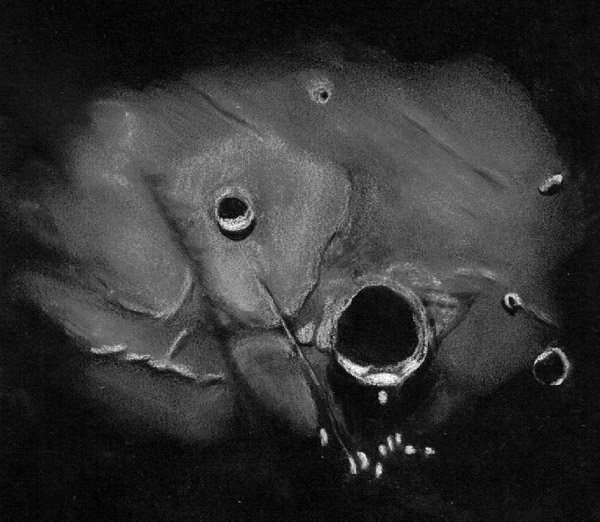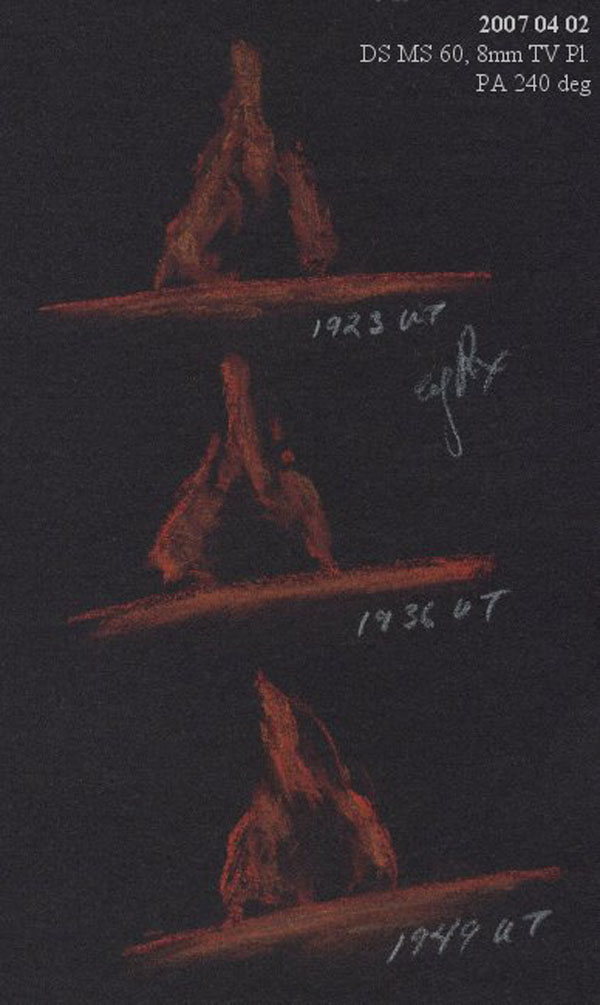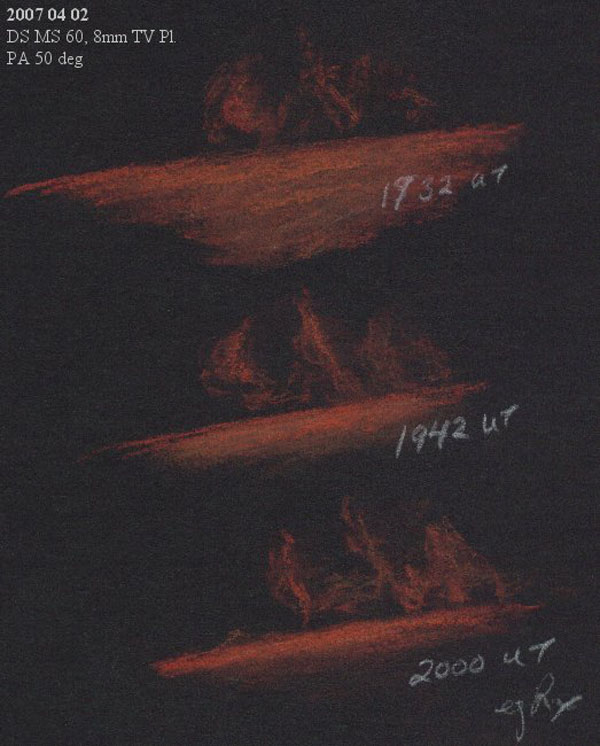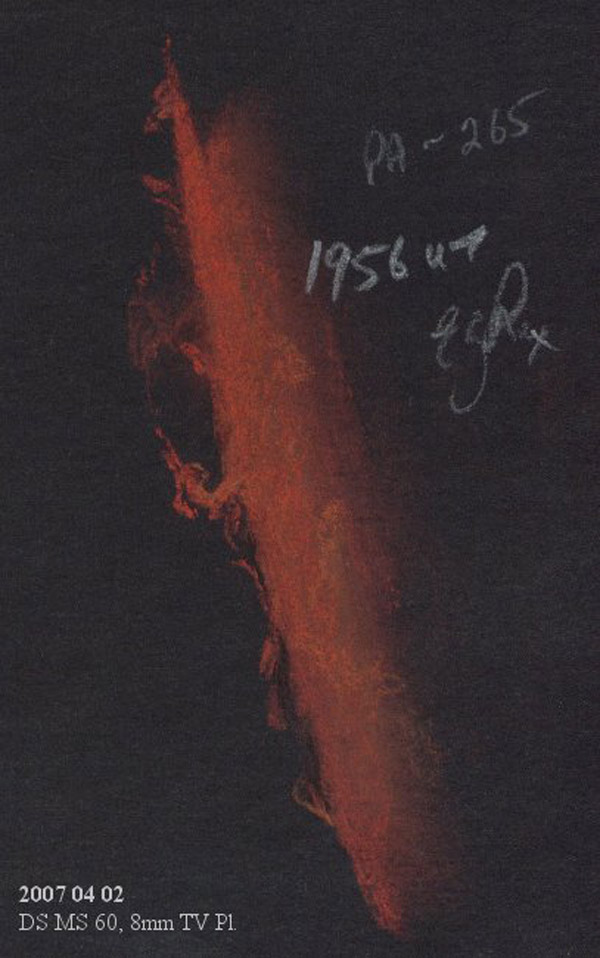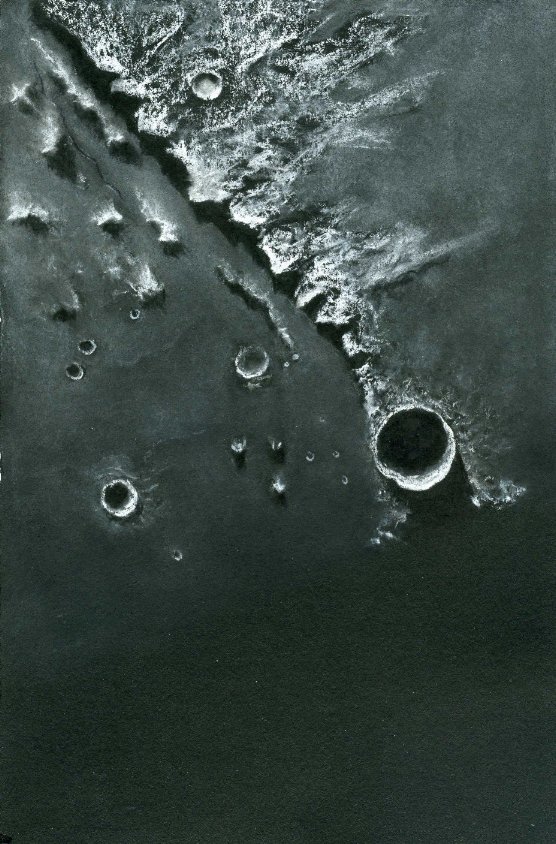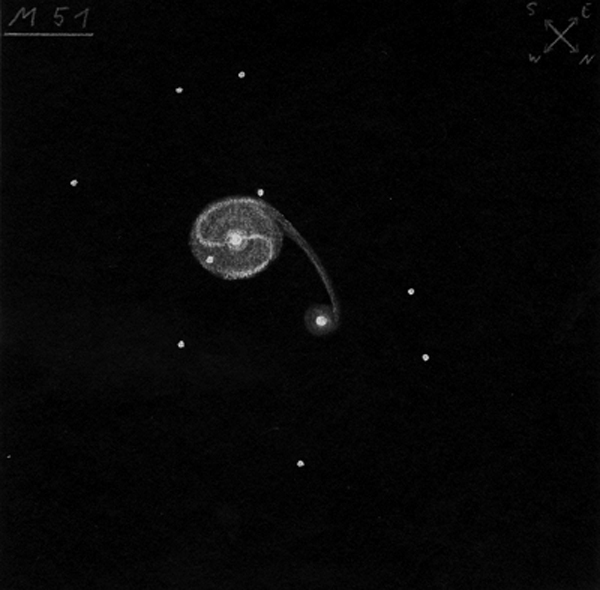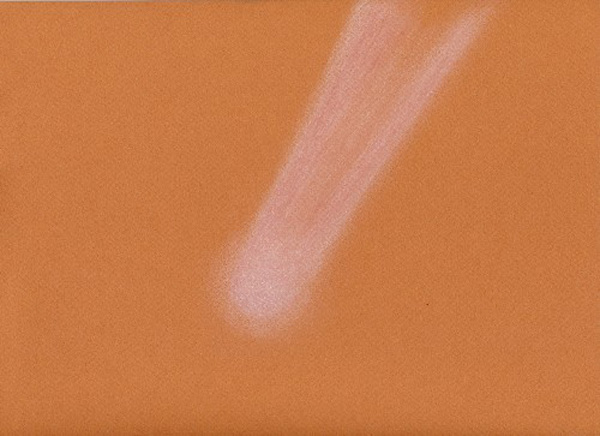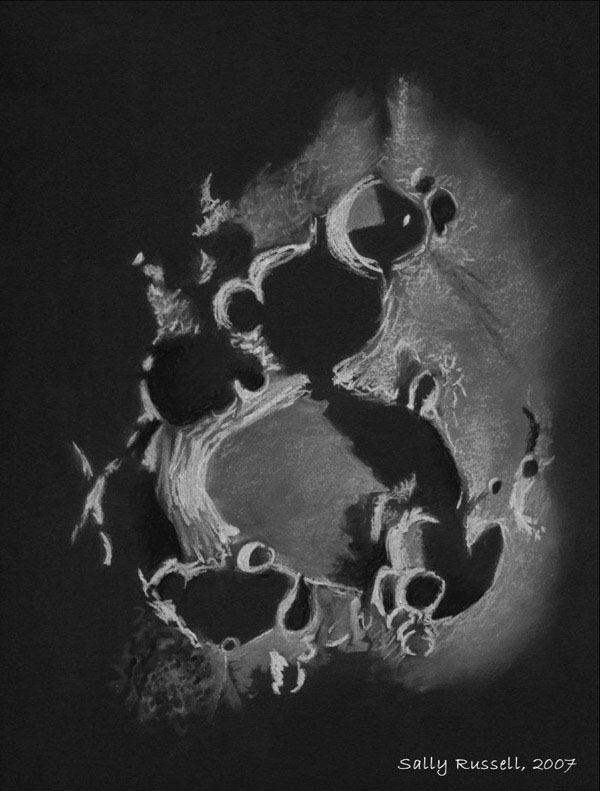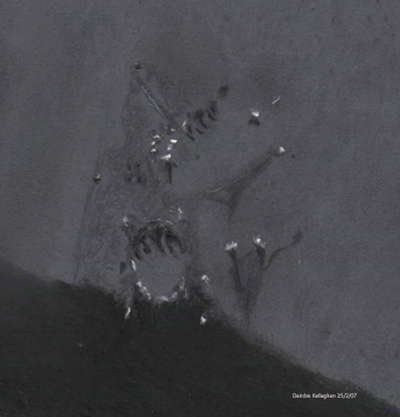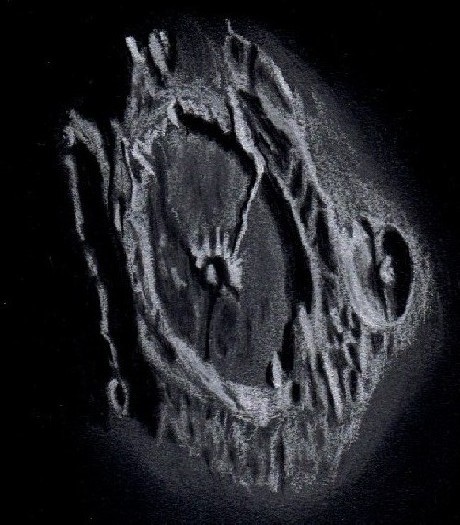Craters Plinius and Dawes
After more than 23 days of very cold, cloudy, winter weather an approaching warm front got me out under the moon and stars on this clear, transparent night of good seeing. I centered the telescope field of view on craters Plinius and Dawes near the lunar terminator. This is the region I selected for my sketching. Plinius is the largest (43km) crater in the sketch. Its central peak and irregular, cratered floor are hidden in darkness but a hint of its terraced walls can be seen on the illuminated inner west margin. Further to the west the peaks near Promontorium Archeruia are catching the rising sunrays. About 55 km to the south of Plinius is crater Ross, a 26 km diameter crater identified only by its sunlit rim. This crater rests in the Sea of Tranquility. To the northeast of Plinius near the edge of the Sea of Serenity is the 19 km crater Dawes, its floor mostly in shadow. Directly to the north of Plinius the rilles of Plinius were clearly visible. In addition a small part of Dorsum Nicol is also seen. All of these features are positioned on the dark colored lavas at the boundary between the two above mentioned seas. The grazing sunlight helped to enhance the changes in topography.
Frank McCabe
Sketch details:
For this sketch I used: black Strathmore 400 Artagain paper 9”x12”, white and
black Conte’ pastel pencils and a soft leather blending stump.
Telescope: 10 inch f/ 5.7 Dobsonian and 6 mm eyepiece
Date: 2-23-2007 1:05-1:45 UT
Temperature: 0C ( 32F)
Clear, calm
Seeing: Antoniadi II
Colongitude 339 degrees
Lunation 5.4 days
Illumination 35.7%

